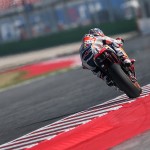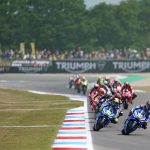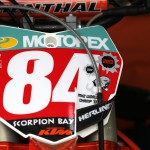Jack Miller became the first rider to win races in the Moto3 class and the premier class. When the Australian made the jump from the smallest category to the premier division the decision was heavily debated but has his Dutch success justified HRC’s decision for Miller to bypass the intermediate Moto2 class?
In some ways it does but in other ways it also cloaked over what has been an exceptionally difficult learning period. Miller’s success may make some teams’ decide to roll the dice on a young rider again but it would be a mistake to do so. From his early Grand Prix career Miller marked himself out as an exceptionally talented rider that had other-worldly levels of confidence and feel in mixed conditions. Assen played perfectly to that ability but it shouldn’t mask the challenges that Miller has faced over the last 18 months.
His rookie campaign, with LCR Honda, was one that saw him barely keep his head above water at times. It was not to be unexpected that Miller would struggle at times last year and the most important barometer of his potential for the future was to be seen in the heights of his peaks rather than the depths of his troughs on the results sheet.
After the British Grand Prix last year, when Miller crashed into his teammate Cal Crutchlow, many riders criticised Miller but even at the time Crutchlow was one of the few riders who saw the huge potential of Miller. The feats of what the rookie had done on the opening lap left a handful of veterans to surmise that his speed and confidence in those conditions was way beyond what anyone could expect from a rookie.
Starting from the mid-pack Miller passed half the field to fight for a podium in that race. To have made so many moves in just a lap and a half showed what a talent he was but at the time it was very raw. The move from LCR to Marc VDS has clearly helped Miller. He has the same crew around him but his calmness and maturity has surprised many. Until Assen this season had not been a successful one with injuries and an underperforming Honda making for a huge challenge. Even so when the moment came to shine at the weekend Miller didn’t blink under the spotlights.
His poise, pace and confidence shone through and he took a deserved win. However, his achievement should not be one that sparks a trend of riders moving from Moto3 to MotoGP. The intermediate class is still a terrific place for riders to learn the nuances of riding and racing a bigger bike. Last year Miller caused numerous serious incidents, including Assen where he triggered an opening lap crash, and time spent in Moto2 may have negated some of that risk. The talent of Miller is that he could adapt to a MotoGP bike quicker than many gave him credit for.
When you look at riders who have come from Moto2, Maverick Viñales being a perfect example, they used the intermediate class to hone their riding style. Transferring the weight in the right way so as not to unsettle the bike and from his first day on the Suzuki he was quickly at ease with the riding style required. It, quite naturally, took Miller longer to adjust and hone his technique to the premier class machine.
While the Australian was able to set respectable laptimes on a MotoGP bike, riders at this level will be able to quickly adapt to riding a MotoGP close to the potential of the bike over a single lap. Learning to do that over a 45 minute race is very different. It is experience and guile that is required for that and Moto2 gives riders that experience. Miller is an outlier and not a trendsetter when it comes to his path to the premier class.
Photo by CormacGP








